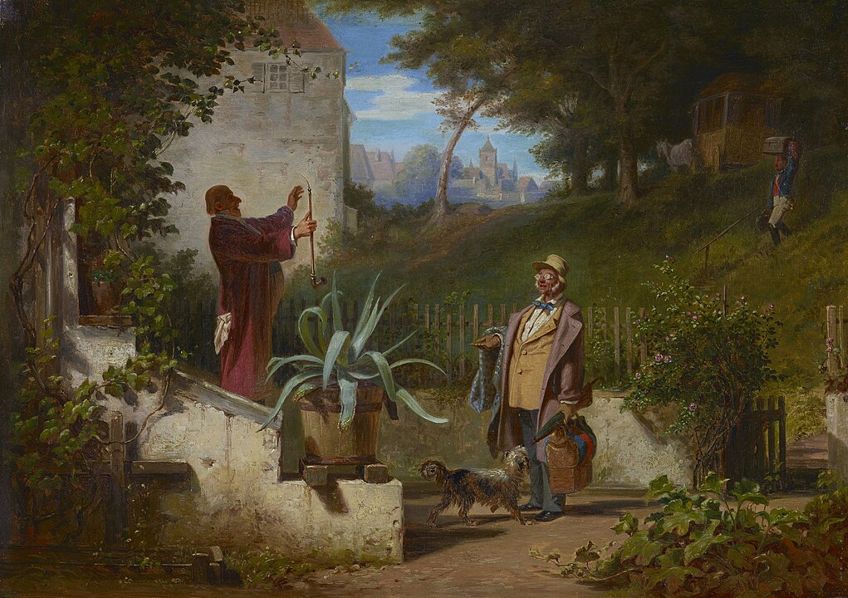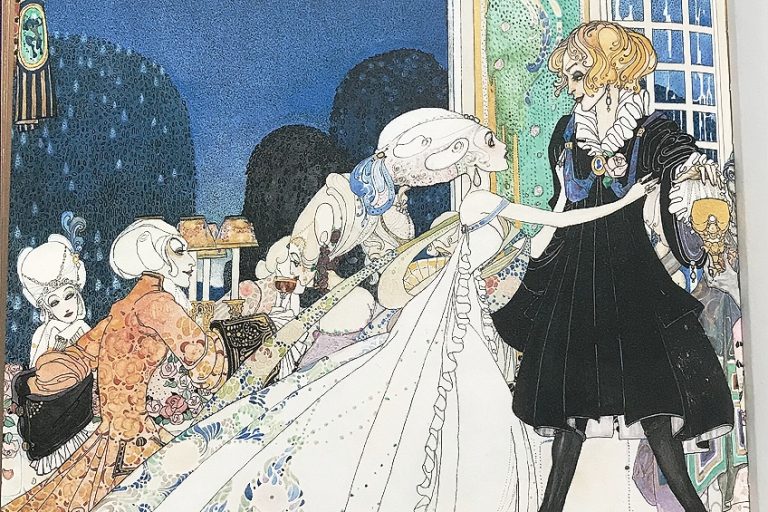Carl Spitzweg – The Acclaimed German Romantic Painter
Step into the whimsical world of Carl Spitzweg, a master of charm and satire in 19th-century German art. With his distinctive blend of humor and observation, Spitzweg captured the quirks and eccentricities of everyday life, painting scenes that resonate with timeless appeal. From the solitude of the bookworm to the hustle and bustle of bustling streets, Spitzweg’s canvases are windows into a world where the ordinary becomes extraordinary. Join us as we unravel the enigmatic charm of this beloved artist whose works continue to enchant and amuse audiences around the globe.
Key Takeaways
- Carl Spitzweg was a central artist of the Biedermeier era and an acclaimed German Romantic painter.
- His artistic career began after his initial training as a pharmacist and subsequent work as a newspaper illustrator.
- Spitzweg’s paintings are celebrated for their narrative quality and portrayals of everyday life in 19th-century Munich.
Early Life and Education
| Birth | February 5, 1808 |
| Death | September 23, 1885 |
| Place of Birth | Unterpfaffenhofen, Bavaria, Holy Roman Empire (now Germany) |
| Nationality | German |
| Art Movement | Biedermeier |
| Notable Artworks |
|
Carl Spitzweg, a notable figure in the realm of 19th-century German art, is remembered for his affinity with the Romantic movement and his distinctive contribution to the Biedermeier period. Spitzweg, originally trained as a pharmacist, gravitated towards painting after a period of working as a newspaper illustrator. His artistic journey began in earnest in 1833, and he quickly became an emblem of Biedermeier-era culture, capturing the quaintness and peculiarity of middle-class life in Germany with a style that favored detailed precision and understated humor.

His work, characterized by its narrative charm and meticulous attention to detail, depicted everyday scenes with a satirical edge that has continued to engage audiences. Spitzweg’s oeuvre includes a vast array of genre scenes, from the lives of bookkeepers and poets to the antics of hermits. Munich, both his birthplace and the location of his death, was the backdrop for much of his life and serves as a recurring setting in his paintings. Respected for his mastery of light and shadow as well as his delicate appreciation of the idiosyncrasies of human character, Carl Spitzweg remains a significant figure in discussions of Romanticism in German art.
Family Background
Spitzweg was born on February 5, 1808, into a wealthy merchant family in Munich. His father, Simon Spitzweg, was a successful merchant, which provided the family with financial security. He pursued pharmacy studies at the University of Vienna, a path aligning with his family’s practical expectations.
However, Spitzweg’s inclination towards creative expression eventually led him from pharmacies to canvases.
Artistic Career
Carl Spitzweg’s artistic journey reflects his gradual transition from pharmacy to painting, finding his unique voice that resonated profoundly with the Biedermeier sensibilities of his time.

Influence of Biedermeier Era
The Biedermeier era was a period of middle-class comfort and domesticity, which significantly influenced Spitzweg’s artwork. His paintings often depict scenes of bourgeois life, with a focus on the simple, tranquil moments. Emphasizing light and genre subjects, Spitzweg’s art exhibits the Biedermeier characteristics of down-to-earth realism.
He also shows a predilection for portraying the ordinary with charm and wistfulness.
German Romantic Painter
Spitzweg is celebrated as a key German Romantic painter, particularly known for his humorous genre works. While the Romantic movement tended to emphasize emotion and nature, Spitzweg applied Romanticism’s ethos to the genre scenes of everyday life. He was adept at capturing the idiosyncrasies of people, often featuring eccentrics like in his well-known paintings The Bookworm and The Poor Poet.

Satiric Magazines and Etching
Before committing to painting full-time, Spitzweg provided illustrations for satiric magazines, indicating his early penchant for humor and social commentary. His background in etching contributed to his strong compositional skills and precision in detailing.
Spitzweg’s connection to print media, including his engagement with art forgery cases, demonstrates his breadth of experience across diverse artistic practices beyond painting.
Relation to Flemish Masters
His artistry was notably informed by the Flemish Masters, whose works he studied and emulated in his early career. This influence is apparent in his detailed depiction of domestic interiors and the use of light, enriching his composition. Spitzweg’s disciplined study of technique allowed him to infuse Flemish precision into his distinctly mid-nineteenth-century vignettes.

Main Artworks
Carl Spitzweg, a notable painter from the Biedermeier period, created genre paintings with a romantic essence. Throughout his career, he produced numerous acclaimed paintings. Among them, several stand out for their unique character and representation of the era. Noteworthy examples of Spitzweg’s work include:
- The Poor Poet (1839): Often hailed as Spitzweg’s most famous piece, this painting depicts a struggling poet living in a humble rooftop room, embodying the romanticized view of the artist as an impoverished yet passionate figure.
- Italian Street Singer (1837): Here Spitzweg presents a lively street scene highlighting the culture of performance and music in public spaces.
- The Butterfly Hunter (1840): Displaying a humorous take on scientific endeavor, this artwork captures the figure of an amateur entomologist, naively pursuing butterflies, oblivious to the world around him.
- Sunday Stroll (1841): This charming piece portrays leisurely bourgeoisie figures taking a walk, a typical pastime of the period.
- The Book Worm (1850): This painting showcases a man engrossed in reading, atop a ladder in a cramped, book-filled room, illustrating the pursuit of knowledge despite the confines of space.
Each painting serves as a snapshot of everyday life during the Biedermeier era, with Spitzweg’s attention to detail and satirical undercurrents.
His body of work is celebrated for these careful observations, encapsulated with a subtle, yet distinct romantic flair.
Themes and Techniques
Carl Spitzweg skillfully blended romantic sentiment with a realist’s eye for detail, light, and shadow. His paintings often focus on middle-class life, imbuing everyday scenes with a sense of humor and warmth.

Romanticism and Realism
Spitzweg’s work embodies the essence of German Romanticism, yet he often incorporates elements of Realism. His paintings reflect an interest in the beauty of the natural world and the quaintness of bourgeois life, all the while capturing these subjects with precision and a truthful eye.
For instance, the quiet dignity of solitary figures like Night Watchmen is depicted with both a romanticized sentiment and a realistic portrayal.
Use of Light and Shadow
The use of light and shadow in Spitzweg’s paintings is a testament to his technique. He adeptly uses chiaroscuro to enhance the three-dimensionality of his subjects and to highlight specific focal points. In “Playing Piano,” for example, light cascades into the room, defining the contours of the instrument and the player, while casting other areas in soft shadow, creating a balanced composition. The same effects can be seen in Bookworm.

Genre Works and Caricatures
Spitzweg is often lauded for his genre works, which are domestic scenes showcasing aspects of social life. His genre scenes are imbued with a sense of humor, as he sometimes gently caricatures his subjects, poking fun at the pretensions and foibles of the middle class.
Works such as The Bookworm feature detailed books and a comic character deeply engrossed in reading, underlining the artist’s fondness for both humor and genre works.
Legacy and Influence
Carl Spitzweg’s contribution to art resonates through his distinct style and continues to hold a significant place in European art history. Spitzweg, born in Unterpfaffenhofen, left a lasting legacy upon his death on September 23, 1885. Museums across Germany and Europe prominently feature Spitzweg’s works. His status as an icon of the Biedermeier era ensures his paintings are a staple collection in art museums that focus on 19th-century European art. In Unterpfaffenhofen, Spitzweg’s place of birth, the memory of his artistic contributions is preserved not only through his artwork but also through local admiration and recognition. The Alter Südfriedhof in Munich, where Spitzweg was buried, stands as a historical site that attracts many who wish to pay homage to the artist.

Spitzweg’s influence extends beyond Germany’s borders as well. His genre scenes and romantic landscapes are lauded for capturing the essence of the Biedermeier period in a way that educates and influences even contemporary artists and aficionados across Europe. Additionally, his work has pervaded popular culture, as evidenced by its appearance in modern settings such as the Stuttgart Criminal Court Assizes and references to characters like the “Traunstein Copyist” and “Toni”, which showcase Spitzweg’s significant cultural impact. His artwork offers a window into the past and continues to influence the portrayal of 19th-century societal norms and aesthetics.
Carl Spitzweg’s art is a delightful journey into the whimsical and satirical facets of everyday life. With his keen eye for detail and penchant for humor, Spitzweg transformed mundane moments into timeless masterpieces that still captivate audiences today. Whether it’s the solitary figure lost in a book or the bustling scenes of bustling streets, his paintings remind us to find joy in the ordinary and humor in the mundane. Spitzweg’s legacy as a master of charm and satire continues to inspire artists and art lovers alike, inviting us to embrace the laughter and wonder woven into the fabric of our lives.
Frequently Asked Questions
How Has Carl Spitzweg Influenced Modern German Art?
Carl Spitzweg is regarded as an essential figure of the Biedermeier period, a style that influenced later German artists with its focus on the introspective and detailed portrayal of bourgeois life. While not a direct proponent of modern movements, his fine detail, subtle humor, and observational skill have left an indelible mark on the storytelling aspect of modern German art.
What Are Some of the Most Renowned Paintings by Carl Spitzweg?
Some of Spitzweg’s most celebrated works include The Poor Poet (1839), which is often cited for its satirical depiction of bohemian life, and The Bookworm (1850), showcasing his characteristic irony and attention to detail. These paintings have cemented Spitzweg’s status as a master of genre painting and as a significant figure in German romanticism.
Isabella studied at the University of Cape Town in South Africa and graduated with a Bachelor of Arts majoring in English Literature & Language and Psychology. Throughout her undergraduate years, she took Art History as an additional subject and absolutely loved it. Building on from her art history knowledge that began in high school, art has always been a particular area of fascination for her. From learning about artworks previously unknown to her, or sharpening her existing understanding of specific works, the ability to continue learning within this interesting sphere excites her greatly.
Her focal points of interest in art history encompass profiling specific artists and art movements, as it is these areas where she is able to really dig deep into the rich narrative of the art world. Additionally, she particularly enjoys exploring the different artistic styles of the 20th century, as well as the important impact that female artists have had on the development of art history.
Learn more about Isabella Meyer and the Art in Context Team.
Cite this Article
Isabella, Meyer, “Carl Spitzweg – The Acclaimed German Romantic Painter.” Art in Context. February 23, 2024. URL: https://artincontext.org/carl-spitzweg/
Meyer, I. (2024, 23 February). Carl Spitzweg – The Acclaimed German Romantic Painter. Art in Context. https://artincontext.org/carl-spitzweg/
Meyer, Isabella. “Carl Spitzweg – The Acclaimed German Romantic Painter.” Art in Context, February 23, 2024. https://artincontext.org/carl-spitzweg/.











